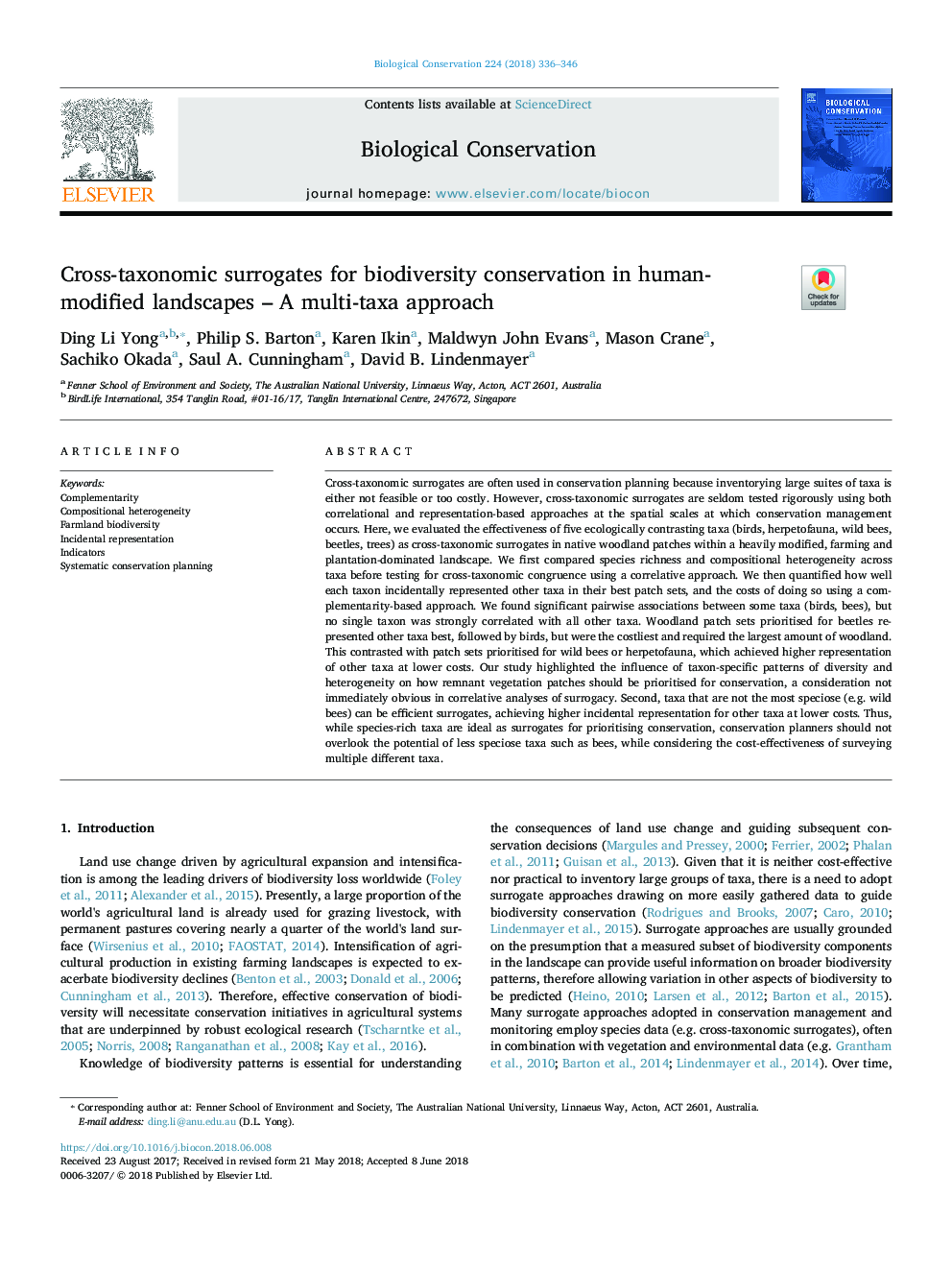| کد مقاله | کد نشریه | سال انتشار | مقاله انگلیسی | نسخه تمام متن |
|---|---|---|---|---|
| 8847219 | 1617881 | 2018 | 11 صفحه PDF | دانلود رایگان |
عنوان انگلیسی مقاله ISI
Cross-taxonomic surrogates for biodiversity conservation in human-modified landscapes - A multi-taxa approach
ترجمه فارسی عنوان
جایگزین های متقابل تاکسنومی برای حفاظت از تنوع زیستی در مناظر اصلاح شده انسان - رویکرد چندگانه
دانلود مقاله + سفارش ترجمه
دانلود مقاله ISI انگلیسی
رایگان برای ایرانیان
کلمات کلیدی
تکمیل ناهمگنی ترکیبی، تنوع زیستی در مزرعه، نمایندگی تصادفی، شاخص ها، برنامه ریزی حفاظت منظم،
موضوعات مرتبط
علوم زیستی و بیوفناوری
علوم کشاورزی و بیولوژیک
بوم شناسی، تکامل، رفتار و سامانه شناسی
چکیده انگلیسی
Cross-taxonomic surrogates are often used in conservation planning because inventorying large suites of taxa is either not feasible or too costly. However, cross-taxonomic surrogates are seldom tested rigorously using both correlational and representation-based approaches at the spatial scales at which conservation management occurs. Here, we evaluated the effectiveness of five ecologically contrasting taxa (birds, herpetofauna, wild bees, beetles, trees) as cross-taxonomic surrogates in native woodland patches within a heavily modified, farming and plantation-dominated landscape. We first compared species richness and compositional heterogeneity across taxa before testing for cross-taxonomic congruence using a correlative approach. We then quantified how well each taxon incidentally represented other taxa in their best patch sets, and the costs of doing so using a complementarity-based approach. We found significant pairwise associations between some taxa (birds, bees), but no single taxon was strongly correlated with all other taxa. Woodland patch sets prioritised for beetles represented other taxa best, followed by birds, but were the costliest and required the largest amount of woodland. This contrasted with patch sets prioritised for wild bees or herpetofauna, which achieved higher representation of other taxa at lower costs. Our study highlighted the influence of taxon-specific patterns of diversity and heterogeneity on how remnant vegetation patches should be prioritised for conservation, a consideration not immediately obvious in correlative analyses of surrogacy. Second, taxa that are not the most speciose (e.g. wild bees) can be efficient surrogates, achieving higher incidental representation for other taxa at lower costs. Thus, while species-rich taxa are ideal as surrogates for prioritising conservation, conservation planners should not overlook the potential of less speciose taxa such as bees, while considering the cost-effectiveness of surveying multiple different taxa.
ناشر
Database: Elsevier - ScienceDirect (ساینس دایرکت)
Journal: Biological Conservation - Volume 224, August 2018, Pages 336-346
Journal: Biological Conservation - Volume 224, August 2018, Pages 336-346
نویسندگان
Ding Li Yong, Philip S. Barton, Karen Ikin, Maldwyn John Evans, Mason Crane, Sachiko Okada, Saul A. Cunningham, David B. Lindenmayer,
